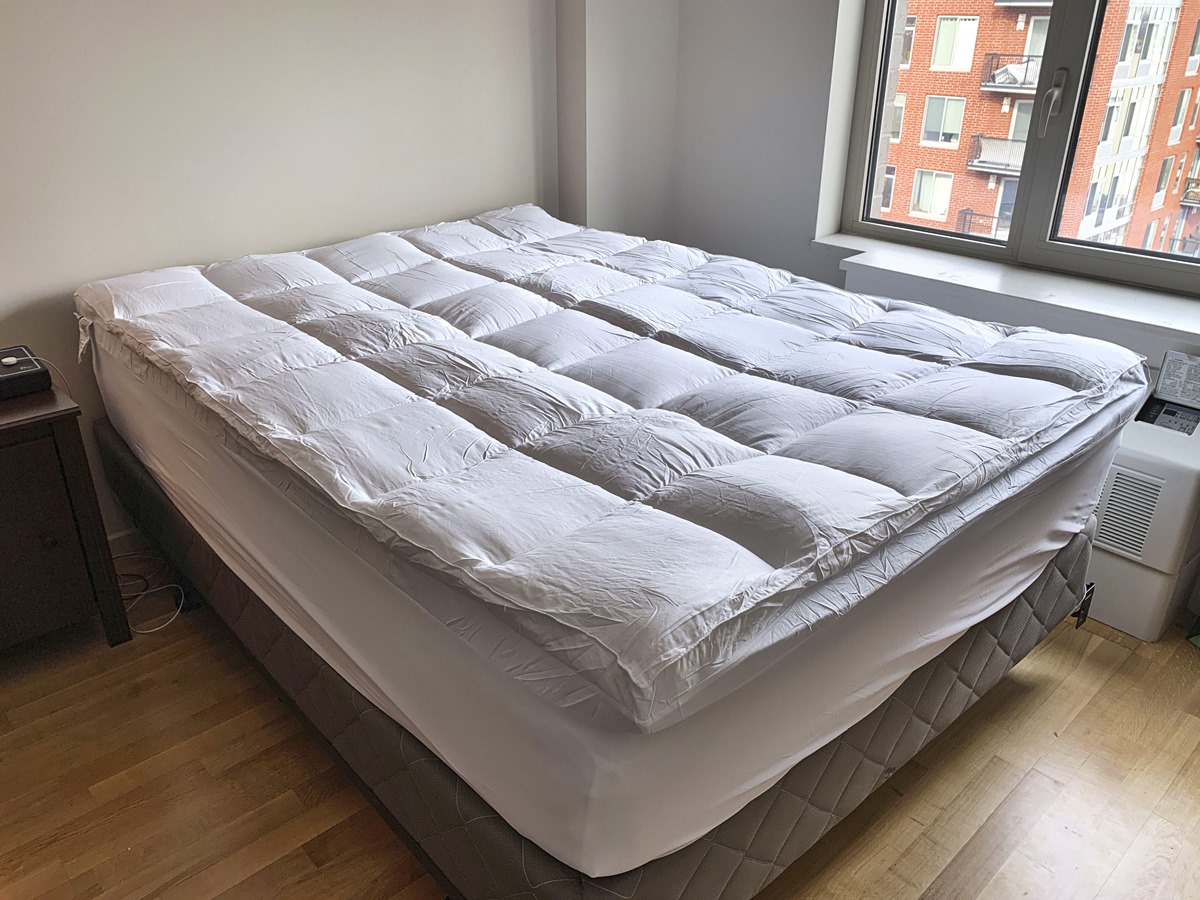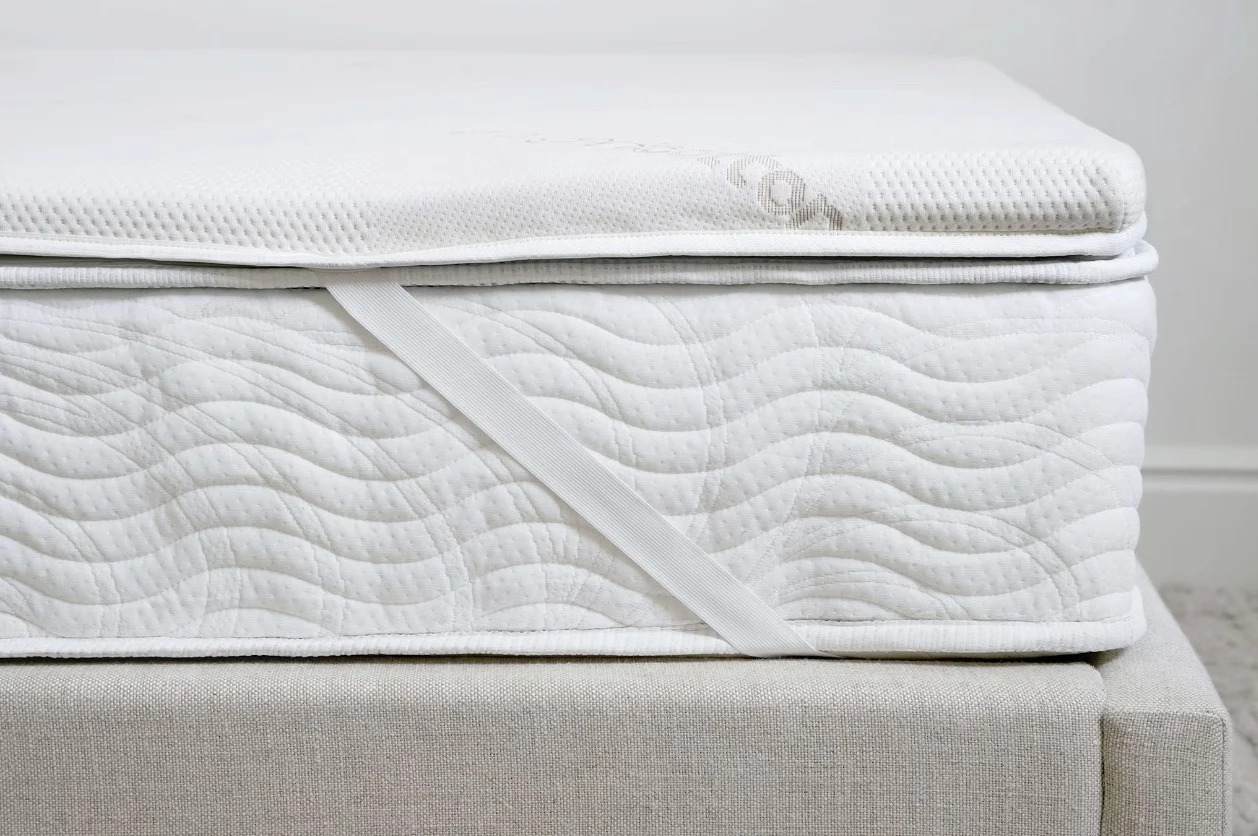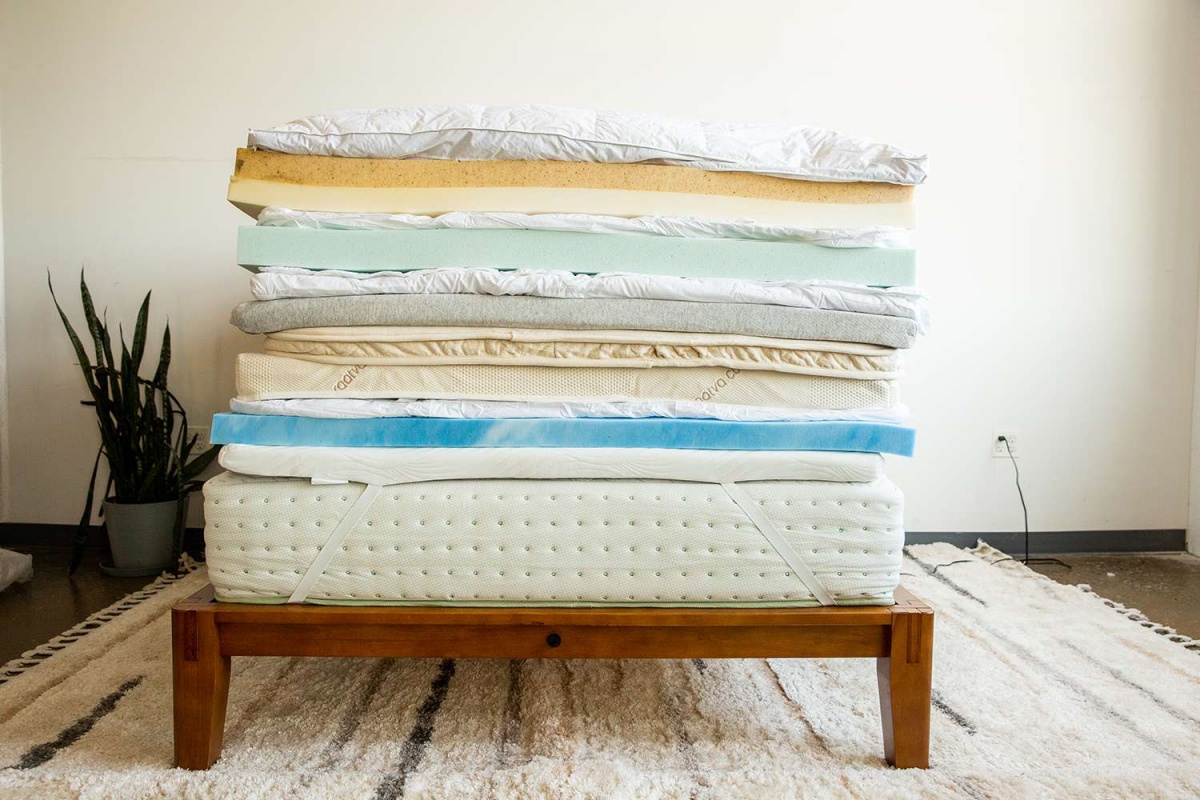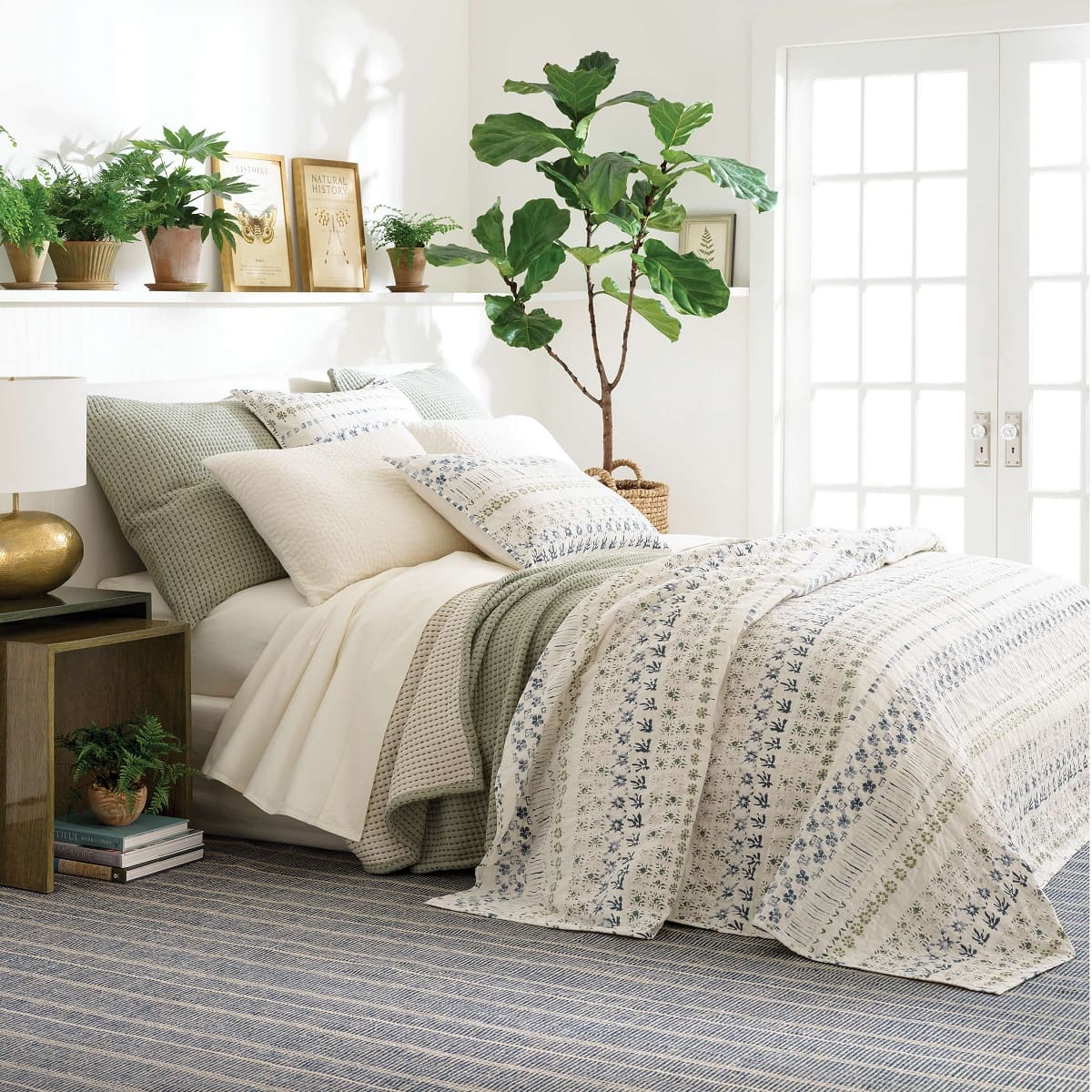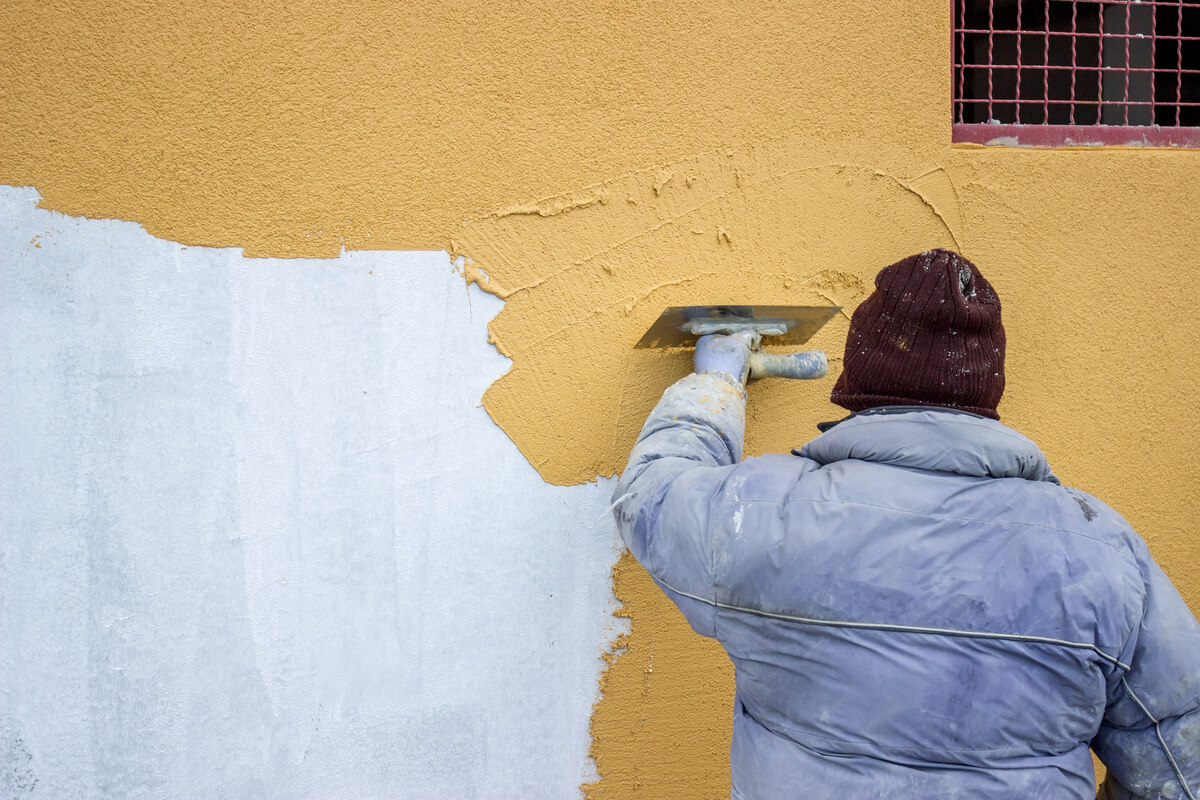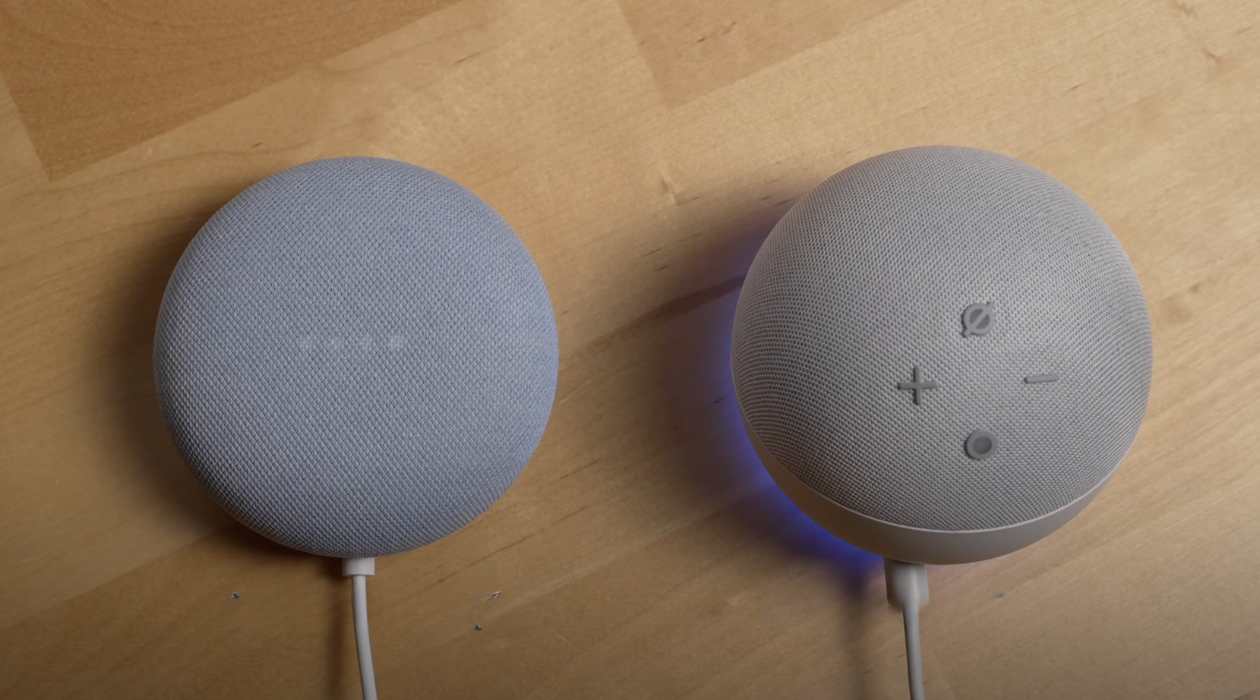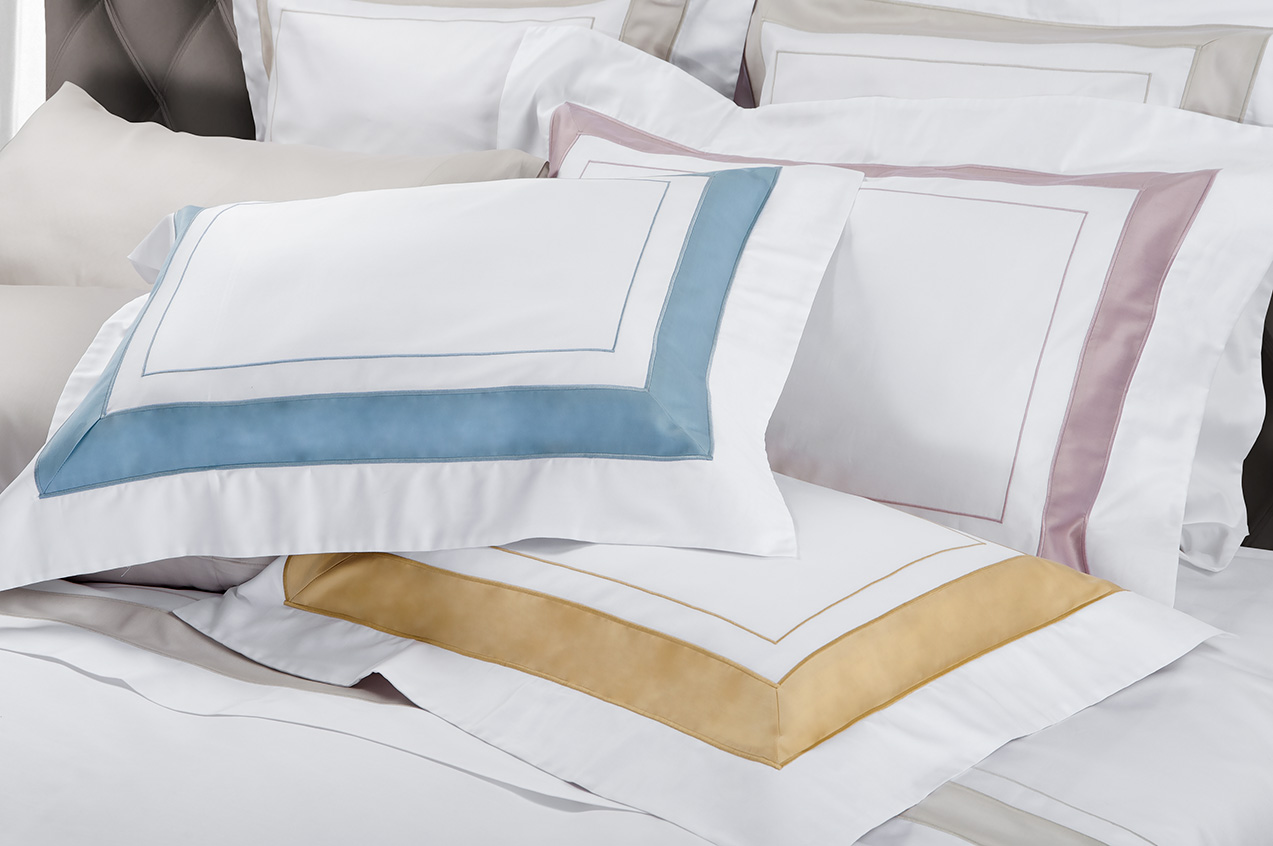Home>Furniture>Bedroom Furniture>What Is The Difference Between A Mattress Pad And A Mattress Topper
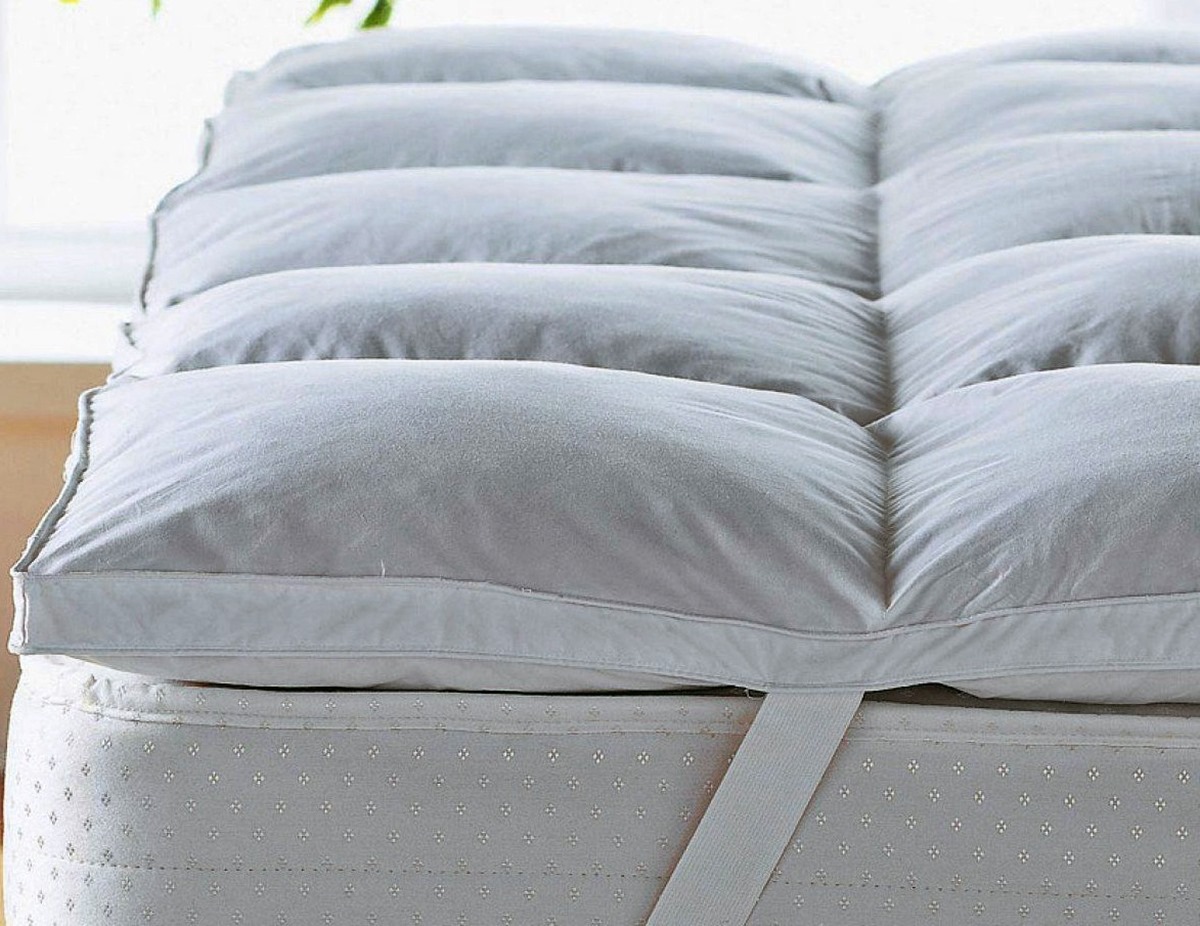

Bedroom Furniture
What Is The Difference Between A Mattress Pad And A Mattress Topper
Modified: January 18, 2024
Discover the key distinctions between a mattress pad and a mattress topper for your bedroom furniture. Choose the perfect accessory for enhanced comfort and support.
(Many of the links in this article redirect to a specific reviewed product. Your purchase of these products through affiliate links helps to generate commission for Storables.com, at no extra cost. Learn more)
Introduction
When it comes to creating a comfortable and inviting bedroom, the right bedding is essential. A key component of a restful night’s sleep is the mattress, but sometimes it needs a little extra something to enhance its comfort and support. This is where mattress pads and mattress toppers come into play.
While the terms “mattress pad” and “mattress topper” are often used interchangeably, they are actually two distinct bedding accessories with different functions and features. Understanding the difference between these two can help you make an informed decision and choose the right option for your sleep needs.
In this article, we will explore the definitions, purposes, materials, thickness, comfort, temperature regulation, cost, maintenance, and cleaning of both mattress pads and mattress toppers. By the end, you will have a clear understanding of the distinctions between them and be better equipped to decide which one is best suited for your bedroom.
So, let’s dive in and explore the world of mattress pads and mattress toppers, and discover the difference they can make in your sleep experience.
Key Takeaways:
- Mattress pads offer subtle comfort enhancement and protection, while mattress toppers provide significant customization and support modification for a rejuvenated sleep experience.
- Consider maintenance, cleaning, and budget when choosing between mattress pads and mattress toppers to enhance sleep quality and prolong mattress lifespan.
Definition of Mattress Pad
A mattress pad is a thin layer of padding that is placed on top of a mattress to provide a combination of comfort, protection, and additional support. It is typically made from quilted or padded materials, such as cotton, polyester, or foam, and is designed to fit securely over the mattress.
The primary function of a mattress pad is to offer a layer of cushioning and softness to enhance the overall comfort of the mattress. It can make a firm mattress feel slightly softer and more comfortable, or provide an extra layer of plushness to a mattress that is already adequately supportive. The padding also helps to prevent the feeling of the springs or coils in the mattress, giving it a smoother surface to sleep on.
In addition to enhancing comfort, mattress pads also serve a protective purpose. They act as a barrier between the sleeper and the mattress, preventing the accumulation of dust, dirt, allergens, and even stains. This makes them particularly useful for individuals who suffer from allergies or asthma, as they can help reduce exposure to potential irritants.
Another benefit of mattress pads is that they can increase the longevity of your mattress. By providing an extra layer of protection, they can help prevent wear and tear, minimizing the risk of damage from spills or accidents. This can save you money in the long run by extending the lifespan of your mattress.
Mattress pads are available in various sizes to fit different mattress dimensions, including twin, queen, king, and California king. They are typically secured to the mattress with elasticized corners or fitted pockets, ensuring a snug and secure fit that stays in place throughout the night.
Overall, a mattress pad is a versatile and practical bedding accessory that offers a combination of comfort, protection, and support. It is an excellent option for those who want to enhance the comfort of their mattress without making significant changes or investing in a new one.
Definition of Mattress Topper
A mattress topper, on the other hand, is a thicker layer of padding that is placed on top of a mattress to provide additional comfort, support, and customization. It is typically made from materials like memory foam, latex, or down alternative, and is designed to alter the feel and firmness of the mattress.
The main purpose of a mattress topper is to modify the surface and feel of the mattress, allowing individuals to customize their sleeping experience according to their preferences. For example, if your mattress is too firm, a soft and plush mattress topper can add a layer of cushioning to make it more comfortable. On the other hand, if your mattress is too soft, a firmer mattress topper can provide the necessary support for a balanced sleep.
Mattress toppers are available in various thicknesses, ranging from 1 to 4 inches or more. Thicker toppers generally provide more significant changes in the feel and support of the mattress, while thinner toppers offer a more subtle adjustment.
In addition to comfort customization, mattress toppers also offer pressure relief and body contouring. Materials like memory foam and latex can conform to the shape of your body, relieving pressure points and promoting proper spinal alignment. This can be particularly beneficial for individuals suffering from back or joint pain.
Similar to mattress pads, mattress toppers also provide an added layer of protection to the mattress. They act as a barrier against potential allergens, dust mites, and spills, helping to keep your mattress cleaner for a longer time. Some mattress toppers also come with removable and washable covers, making them even easier to clean and maintain.
When it comes to sizing, mattress toppers are available in various dimensions to fit different mattress sizes. They are typically placed directly on top of the mattress, secured with fitted elasticized corners or straps to ensure they stay in place during the night.
In summary, a mattress topper is a thicker layer of padding that offers additional comfort, support, and customization to your mattress. It allows you to adjust the firmness and feel of your mattress to meet your specific sleep needs, while also providing protection and pressure relief. Consider a mattress topper if you are looking to enhance the overall comfort and support of your existing mattress.
Purpose of Mattress Pad
The primary purpose of a mattress pad is to enhance the comfort and protection of your mattress. Here are some key reasons why people use mattress pads:
1. Comfort Enhancement: A mattress pad can add an extra layer of cushioning and softness to your mattress. It can make a firm mattress feel more plush and comfortable or provide additional support to a mattress that lacks adequate firmness.
2. Temperature Regulation: Some mattress pads are designed with cooling properties, such as breathable fabrics or cooling gel-infused materials. These features can help regulate body temperature and prevent overheating during sleep, especially for individuals who tend to sleep hot.
3. Allergen Prevention: Mattress pads act as a barrier between your body and the mattress, reducing exposure to dust mites, allergens, and other potential irritants. They can help alleviate allergy symptoms and provide a cleaner and healthier sleep environment.
4. Protection against Stains and Spills: Mattress pads provide a protective layer that guards your mattress against spills, sweat, and accidents. They can help extend the life of your mattress by preventing stains and minimizing wear and tear.
5. Noise Reduction: Some mattress pads are designed to reduce noise caused by movement on the mattress. This can be particularly beneficial for individuals who are easily disturbed by their partner’s movements during sleep.
6. Easy Maintenance: Mattress pads are generally easy to remove and clean, often machine washable. This makes it convenient to keep your mattress pad fresh and hygienic, promoting better sleep hygiene.
7. Versatility: Mattress pads are available in a variety of thicknesses and materials, allowing you to customize the level of comfort and support according to your preferences. They can be used on different types of mattresses, including memory foam, spring, or hybrid mattresses.
Overall, the purpose of a mattress pad is to improve the comfort, protection, and longevity of your mattress. It can enhance your sleep experience by adding an extra layer of softness, regulating temperature, and protecting against allergens and stains. Consider a mattress pad as an affordable and practical solution to enhance the overall quality of your sleep.
Purpose of Mattress Topper
A mattress topper serves several important purposes and offers unique benefits that can greatly enhance your sleep experience. Here are some key reasons why people use mattress toppers:
1. Comfort Enhancement: One of the primary purposes of a mattress topper is to improve the overall comfort of your mattress. If your mattress feels too firm or too soft, a mattress topper can add an extra layer of cushioning or support to create a more comfortable sleeping surface. It allows you to customize the feel and firmness of your bed according to your personal preferences.
2. Pressure Relief and Body Contouring: Many mattress toppers, especially those made from memory foam or latex, conform to the shape of your body, providing pressure relief and optimal support. They distribute your body weight evenly, relieving pressure points and reducing the likelihood of waking up with aches or pains.
3. Support Enhancement: If you find that your mattress lacks adequate support, a mattress topper can add an extra layer of support to align your spine and provide proper support to your body. This is particularly beneficial for individuals with back or joint pain or those who prefer a firmer sleeping surface.
4. Temperature Regulation: Some mattress toppers are designed with cooling properties, such as gel-infused memory foam or breathable materials. These features help dissipate heat and regulate body temperature, keeping you cool and comfortable throughout the night.
5. Mattress Protection: Just like mattress pads, mattress toppers offer an additional layer of protection to your mattress. They act as a barrier against sweat, allergens, dust mites, and spills, helping to extend the lifespan of your mattress and keep it clean and hygienic.
6. Bedding Customization: Mattress toppers are an excellent solution if you and your partner have different sleep preferences. Rather than compromising on a single mattress, you can use individual mattress toppers on each side of the bed to meet your specific comfort and support needs.
7. Reviving an Old Mattress: If your mattress is old or has started to lose its comfort and support, a mattress topper can rejuvenate it and prolong its usable life. By adding a thicker and more supportive topper, you can breathe new life into your mattress without the need for an expensive replacement.
In summary, the purpose of a mattress topper is to enhance the comfort, support, and customization of your mattress. Whether you want to modify the firmness, alleviate pressure points, regulate temperature, or protect your mattress, a well-chosen mattress topper can greatly enhance your sleeping experience and contribute to a restful night’s sleep.
Material and Construction of Mattress Pad
Mattress pads are available in a variety of materials and construction types, each offering different levels of comfort, durability, and functionality. Let’s explore some common materials and construction techniques used in mattress pads:
1. Cotton: Cotton is a popular choice for mattress pads due to its softness, breathability, and durability. It offers a natural and hypoallergenic sleep surface, making it suitable for individuals with allergies or sensitive skin. Cotton mattress pads are typically quilted or stitched to provide extra cushioning and to keep the filling evenly distributed.
2. Polyester: Polyester mattress pads are known for their affordability, wrinkle resistance, and ease of maintenance. They often have a polyester fiberfill or down alternative fill, providing a plush layer of padding on top of the mattress. Polyester mattress pads are usually machine washable, making them convenient and practical for regular cleaning.
3. Wool: Wool mattress pads offer excellent temperature regulation, as wool fibers naturally wick away moisture and help regulate body heat. Wool is also a naturally antimicrobial material, reducing the growth of bacteria and allergens. Wool mattress pads are often quilted or tufted for added comfort and to prevent the wool batting from shifting.
4. Memory Foam: Memory foam mattress pads are well-known for their contouring and pressure-relieving properties. These pads are constructed with a layer of viscoelastic memory foam, which conforms to the shape of your body, alleviating pressure points and promoting proper spinal alignment. Memory foam mattress pads are available in different thicknesses to offer varying levels of support and plushness.
5. Latex: Latex mattress pads are made from natural or synthetic rubber materials. They provide excellent support, resilience, and responsiveness, contouring to the body’s curves while maintaining a buoyant feel. Latex mattress pads have natural breathability and temperature regulation properties, promoting a cool and comfortable sleep environment.
6. Quilting and Stitching: The construction technique used in mattress pads often involves quilting or stitching to secure the filling in place and prevent it from shifting. This ensures the padding stays evenly distributed and maintains a consistent level of comfort and support throughout the pad.
7. Elasticized Corners or Fitted Pocket: Many mattress pads feature elasticized corners or fitted pockets that wrap around the corners of the mattress, ensuring a snug and secure fit. This prevents the pad from slipping or bunching up during the night, allowing you to enjoy uninterrupted sleep.
It’s important to consider your specific needs, preferences, and budget when choosing the material and construction of a mattress pad. Different materials offer varying levels of plushness, support, and temperature regulation, so select the one that aligns with your desired sleep experience.
Material and Construction of Mattress Topper
Mattress toppers are available in a variety of materials and construction types. The choice of material and construction can greatly affect the comfort, support, and durability of the topper. Let’s explore some common materials and construction techniques used in mattress toppers:
1. Memory Foam: Memory foam mattress toppers are popular for their contouring and pressure-relieving properties. They are constructed with a layer of viscoelastic foam that conforms to the body’s shape, providing excellent support and alleviating pressure points. Memory foam toppers can vary in thickness and density, allowing for customization of comfort and support levels.
2. Latex: Latex mattress toppers are made from natural or synthetic rubber materials. They offer excellent support, resilience, and durability. Latex toppers provide a responsive and breathable sleep surface and are known for their natural cooling properties. They are available in different firmness levels, allowing for customization based on individual preferences.
3. Down Alternative: Down alternative mattress toppers are constructed using synthetic loft fibers or clusters designed to mimic the softness and plushness of down feathers. They provide a cozy and cloud-like sleeping surface, suitable for those who prefer a softer feel. Down alternative toppers are hypoallergenic and often machine washable, making them easy to clean and maintain.
4. Feather: Feather mattress toppers are made from a blend of feathers and down. They offer a luxurious and soft sleep surface, providing a balance of support and plushness. Feather toppers require regular fluffing to maintain loft and prevent clumping. While they offer exceptional comfort, they may not be suitable for individuals with allergies or sensitivities.
5. Wool: Wool mattress toppers are prized for their natural breathability, moisture-wicking properties, and temperature regulation. They provide a cool and comfortable sleep environment, suitable for all seasons. Wool toppers offer gentle support and can contour to the body’s shape for added comfort. They are also naturally antimicrobial, making them resistant to dust mites and allergens.
6. Quilting and Channeling: Mattress toppers are often constructed with quilting or channeling techniques to keep the filling or padding in place. This ensures even distribution of support and eliminates any potential for lumps or shifting of materials.
7. Anchor Straps or Skirting: Some mattress toppers come with anchor straps or a fitted skirt design to secure them to the mattress. This helps prevent the topper from sliding or bunching up during the night, ensuring a secure and comfortable sleep surface.
When selecting a mattress topper, consider your personal preferences, comfort needs, and any specific sleep concerns you may have. Each material offers unique benefits, so choose the one that aligns with your desired level of comfort, support, and temperature regulation.
A mattress pad is a thin layer that primarily provides protection, while a mattress topper is thicker and designed to add comfort and support. Consider your specific needs before choosing between the two.
Differences in Thickness
One of the main distinctions between mattress pads and mattress toppers is their thickness. The thickness of these bedding accessories can significantly impact the level of comfort, support, and overall feel of your mattress. Let’s explore the differences in thickness between mattress pads and mattress toppers:
1. Mattress Pads: Mattress pads are typically thin, ranging from 0.5 to 2 inches in thickness. They provide a minimal layer of cushioning and padding on top of the mattress. The primary purpose of a mattress pad is to offer a subtle enhancement to the comfort of your mattress rather than making significant changes to its overall feel or support. Mattress pads are ideal for individuals who want a slight increase in comfort without drastically altering the firmness of their mattress.
2. Mattress Toppers: In contrast, mattress toppers are thicker than mattress pads, ranging from 2 to 4 inches or more in thickness. They provide a more substantial layer of padding and support. The added thickness allows for a more noticeable modification to the feel and firmness of the mattress. Mattress toppers can provide extra cushioning for individuals who desire a softer sleeping surface or offer additional support to those who prefer a firmer feel.
The difference in thickness between mattress pads and mattress toppers plays a crucial role in the level of customization and comfort they provide. Mattress pads are thinner and offer a subtle boost to the overall comfort, while mattress toppers offer more significant modifications to the feel and support of the mattress.
It’s essential to consider your specific needs and comfort preferences when deciding between a mattress pad and a mattress topper. If you’re seeking a minimal enhancement to your mattress’s comfort or protection, a mattress pad with its thinner profile may be suitable. On the other hand, if you’re looking to significantly alter the feel or firmness of your mattress, a thicker mattress topper would be a better choice.
Ultimately, the ideal choice will depend on your desired level of customization and the specific needs of your sleep surface. Consider the current state of your mattress, your comfort preferences, and any underlying sleep concerns to determine the appropriate thickness that will enhance your overall sleep experience.
Differences in Comfort and Support
When comparing mattress pads and mattress toppers, it’s important to consider the differences in comfort and support that each of these bedding accessories provides. These factors play a significant role in determining the overall feel and quality of your sleep experience. Let’s explore the distinctions in comfort and support between mattress pads and mattress toppers:
1. Mattress Pads: Mattress pads are designed to add a layer of cushioning and softness to your mattress. They offer a subtle increase in comfort and can make a firm mattress feel slightly softer. However, their primary function is not to provide significant support or alter the overall feel of the mattress. Instead, mattress pads offer a minimal upgrade to the existing comfort level, primarily focusing on enhancing the surface texture and relieving minor pressure points.
2. Mattress Toppers: In contrast, mattress toppers are specifically designed to modify the comfort and support of your mattress. They offer more noticeable changes to the feel and firmness, allowing you to customize the sleep surface to match your preferences. Mattress toppers can add extra cushioning and contouring to provide pressure relief, making them particularly beneficial for individuals with back pain or those seeking a plusher sleep experience. They also offer additional support, especially when made from materials like memory foam or latex, which can help improve spinal alignment and alleviate discomfort.
The level of comfort and support provided by mattress pads and mattress toppers depends largely on the materials used and their construction. Memory foam or latex mattress toppers, for example, offer exceptional contouring and responsiveness, providing personalized support and optimal pressure relief. Meanwhile, mattress pads made from quilted cotton or down alternative offer a softer surface without significantly changing the support of the underlying mattress.
Consider your specific comfort preferences and any existing sleep issues when choosing between a mattress pad and a mattress topper. If you are primarily seeking a subtle increase in comfort and surface texture, a mattress pad may be more suitable. However, if you desire a significant modification to the feel and support of your mattress, a mattress topper, with its ability to provide customized comfort and support, would be the better choice.
Ultimately, both mattress pads and mattress toppers can enhance the comfort and support of your mattress, but the extent to which they do so may vary. It is essential to select the option that aligns with your comfort needs and enhances your overall sleep experience.
Differences in Temperature Regulation
Temperature regulation is an essential factor to consider when choosing bedding accessories like mattress pads and mattress toppers. The ability of these products to maintain a comfortable sleep temperature can greatly impact the quality of your rest. Let’s explore the differences in temperature regulation between mattress pads and mattress toppers:
1. Mattress Pads: Mattress pads typically offer minimal temperature regulation benefits. While some mattress pads may have moisture-wicking or breathable features, their primary purpose is to enhance comfort and protect the mattress rather than actively regulate temperature. However, certain mattress pad materials, such as cotton or wool, can provide a more breathable sleep surface, allowing some heat to dissipate and promoting airflow, which can aid in temperature regulation.
2. Mattress Toppers: Mattress toppers, particularly those made with specific materials, can provide more effective temperature regulation. Memory foam and latex toppers, for example, often incorporate cooling technologies like gel-infused foam or open-cell structures, which help dissipate heat and maintain a cooler sleep surface. These materials are known for their ability to adapt to body heat and provide a thermally neutral sleeping environment.
It’s important to note that the temperature regulation performance of mattress pads and mattress toppers can vary based on the individual’s preferences and the specific circumstances. Factors such as room temperature, personal metabolism, and climate can affect how effectively these bedding accessories regulate heat.
If you tend to sleep hot and prioritize temperature regulation, consider mattress toppers with cooling properties, such as gel-infused memory foam or latex. These materials are engineered to disperse heat and prevent it from being trapped to provide a cooler surface for sleep. Additionally, natural materials like wool can offer breathability and moisture-wicking properties, which can help regulate body temperature.
In summary, while both mattress pads and mattress toppers can contribute to temperature regulation to some extent, it is the mattress toppers that generally offer more significant advancements and targeted features in this area. Consider your personal sleep preferences, body temperature, and the climate in which you reside when choosing a mattress pad or mattress topper that will best help create a comfortable sleep environment for you.
Cost Comparison
When it comes to the cost comparison between mattress pads and mattress toppers, several factors come into play, including the materials used, construction techniques, and thickness. Let’s explore the cost differences between these two bedding accessories:
1. Mattress Pads: Mattress pads are generally the more affordable option compared to mattress toppers. The cost of mattress pads can vary depending on the materials used, with cotton and polyester pads being more affordable and luxury materials like wool being pricier. The price of mattress pads also depends on the level of padding, thickness, and brand. Overall, mattress pads are often budget-friendly and offer a cost-effective way to enhance the comfort and protection of your mattress without breaking the bank.
2. Mattress Toppers: Mattress toppers tend to be more expensive than mattress pads due to their thicker profiles and often higher quality materials. The cost of mattress toppers can be influenced by factors such as the thickness, material composition, brand reputation, and any additional features like cooling technologies or special constructions. Memory foam and latex toppers, known for their superior comfort and support, are typically priced higher than down alternative or feather toppers. Keep in mind that investing in a high-quality mattress topper can significantly improve your sleep comfort and provide a longer-lasting solution.
While the cost of mattress pads and mattress toppers can vary, it’s important to consider the value and lifespan of the product. Investing in a higher-priced mattress topper made from durable and premium materials may offer longer-term benefits and better performance, potentially extending the lifespan of your mattress and providing enhanced sleep quality over time.
Remember that the cost of these bedding accessories also depends on factors such as brand reputation, sales promotions, and individual retailer pricing. Shopping around, comparing prices, and exploring different brands and options can help you find the best value for your budget.
Consider your desired level of comfort, the longevity you seek, and your available budget when deciding between a mattress pad and a mattress topper. If budget is a primary concern, a mattress pad may be the more economical choice. However, if you’re looking for a significant improvement in comfort and support, a mattress topper, despite its higher cost, may be a worthwhile investment.
Ultimately, the cost comparison between mattress pads and mattress toppers will depend on your individual preferences, budget, and desired level of comfort and support. Weigh your options carefully and choose the bedding accessory that aligns with your needs and delivers the best value for your investment.
Maintenance and Cleaning
Proper maintenance and regular cleaning are essential for ensuring the longevity and hygiene of your bedding accessories, such as mattress pads and mattress toppers. Let’s explore the maintenance and cleaning requirements for both of these products:
1. Mattress Pads: Mattress pads are generally easy to maintain and clean. Most mattress pads are machine washable, although it is always important to check the care instructions provided by the manufacturer. Before washing, remove any removable components, such as covers or straps, if applicable. Wash the mattress pad with a mild detergent on a gentle cycle, and use cold or warm water according to the label instructions. Avoid using bleach and high heat settings when drying. Once dry, reattach any removable components and ensure the pad is fully secured to the mattress. Regular cleaning helps to remove dirt, stains, and allergens, keeping your mattress pad fresh and hygienic.
2. Mattress Toppers: Cleaning methods for mattress toppers may vary based on the specific material and construction. Some mattress toppers, such as memory foam or latex, are not designed to be machine washed. Instead, spot cleaning is recommended for spills or stains. Use a mild detergent mixed with water and a clean cloth or sponge to gently clean the affected surface. Always blot and avoid excessive moisture, as it can damage the foam or latex. To freshen up the topper, you can also sprinkle baking soda on the surface, let it sit for a few hours, and then vacuum it off. Additionally, using a mattress protector or cover can help protect the topper from spills and stains, reducing the need for frequent cleaning.
Regardless of the type of bedding accessory, it is essential to follow the care instructions provided by the manufacturer. This ensures that you clean your mattress pad or mattress topper in a way that maintains its quality and prolongs its lifespan. Additionally, regularly airing out your mattress pad or topper by removing the sheets and allowing it to breathe can help prevent the buildup of odor or moisture.
It is also advisable to rotate and flip your mattress periodically to distribute the weight evenly and prevent sagging or indentations, as this can impact the performance and lifespan of both mattress pads and mattress toppers.
By following proper maintenance and cleaning practices, you can keep your mattress pad or mattress topper in good condition, maximizing its longevity and ensuring a clean and healthy sleep environment.
Note: Please always refer to the care instructions provided by the manufacturer of your specific mattress pad or mattress topper for the most accurate and appropriate cleaning and maintenance guidelines.
Conclusion
Choosing the right bedding accessories, such as mattress pads and mattress toppers, can greatly enhance your sleep experience. By understanding the differences between these two products, you can make an informed decision based on your specific needs and preferences.
Mattress pads offer a thin layer of cushioning and protection, primarily focusing on comfort enhancement and providing a subtle upgrade to the feel of your mattress. They are budget-friendly and easy to maintain, making them an ideal choice for those looking to add a touch of softness or protect their mattress from stains and allergens.
On the other hand, mattress toppers offer a thicker layer of padding and are designed to modify the comfort and support of your mattress more significantly. They provide personalized support, contouring to your body’s shape, and can address specific sleep concerns such as pressure points or firmness preferences. While they may be slightly more expensive, mattress toppers deliver enhanced comfort and can rejuvenate an old or uncomfortable mattress.
Consider factors such as thickness, material and construction, temperature regulation, and cost when making your decision. Also, keep in mind that maintenance and cleaning play an essential role in prolonging the lifespan and freshness of both mattress pads and mattress toppers.
Whether you opt for a mattress pad or a mattress topper, investing in these bedding accessories can transform the quality of your sleep. They offer added comfort, support, and protection, ensuring you wake up refreshed and ready for the day ahead.
Remember to consider your individual sleep needs and preferences when choosing between mattress pads and mattress toppers. Evaluate factors such as your desired level of comfort, temperature regulation requirements, and budget. By making a thoughtful choice, you can create a sleep environment tailored to your needs and enjoy the benefits of improved comfort and support.
In the end, both mattress pads and mattress toppers have their unique advantages, and the right choice for you depends on your specific sleep preferences and needs. Regardless of your decision, both options can provide an invaluable addition to your bedding, ensuring a restful and rejuvenating night’s sleep for years to come.
Frequently Asked Questions about What Is The Difference Between A Mattress Pad And A Mattress Topper
Was this page helpful?
At Storables.com, we guarantee accurate and reliable information. Our content, validated by Expert Board Contributors, is crafted following stringent Editorial Policies. We're committed to providing you with well-researched, expert-backed insights for all your informational needs.
